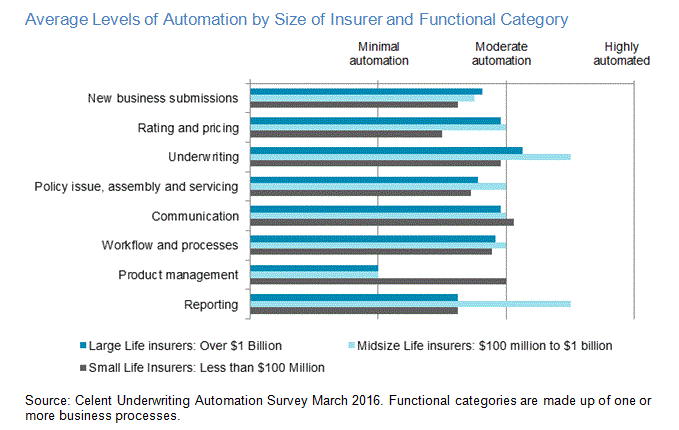Making Life Insurance Underwriting Investments That Pay Off
Abstract
Automation of underwriting processes carries the promise of improved results, but can come at a significant cost. So where is the industry today, and when does it make sense to invest in automation?

Underwriting is at the core of the insurance industry. The processes of selecting and pricing risk and the additional operational processes necessary to deliver a policy and provide ongoing services are essential to the profitability of a carrier. Over the last few years, carriers have been heavily engaged in replacing core policy administration systems and increasing the automation of their underwriting processes.
Automating processes can be expensive because of both the hard costs of purchasing and implementing technology and changing processes and the soft costs. Change can be hard on both underwriting staff and on the agents who receive the output of the underwriting process.
So when does it make sense to invest in automation? Are there pieces of the underwriting process that, when automated, are more likely to improve results? Celent investigates these questions to provide guidance to carriers that are trying to prioritize their efforts.
“With this report, we wanted to understand the actual state of underwriting automation in the insurance industry,” says Colleen Risk, a senior analyst with Celent’s life insurance practice and coauthor of the report. “Insurers can compare their level of automation to the underwriting capabilities framework and their peers to ascertain if they are making the most of their underwriting automation investments.”
“As expected automation has a positive impact on key metrics like NIGO rates and cycle time,” states Karen Monks, an analyst with Celent’s life insurance practice and coauthor of the report. “Automation that ensures data is collected quickly and accurately is worth investigating, especially if it matches the strategic goals of the company like improved customer service.”
To understand what insurers are doing in this area, Celent conducted a survey. The process of underwriting was broken into 22 logical components of work. For each component, the levels of automation range from minimal automation to highly automated. Insurers can use this report as a diagnostic tool by comparing their scores to the benchmarks.


